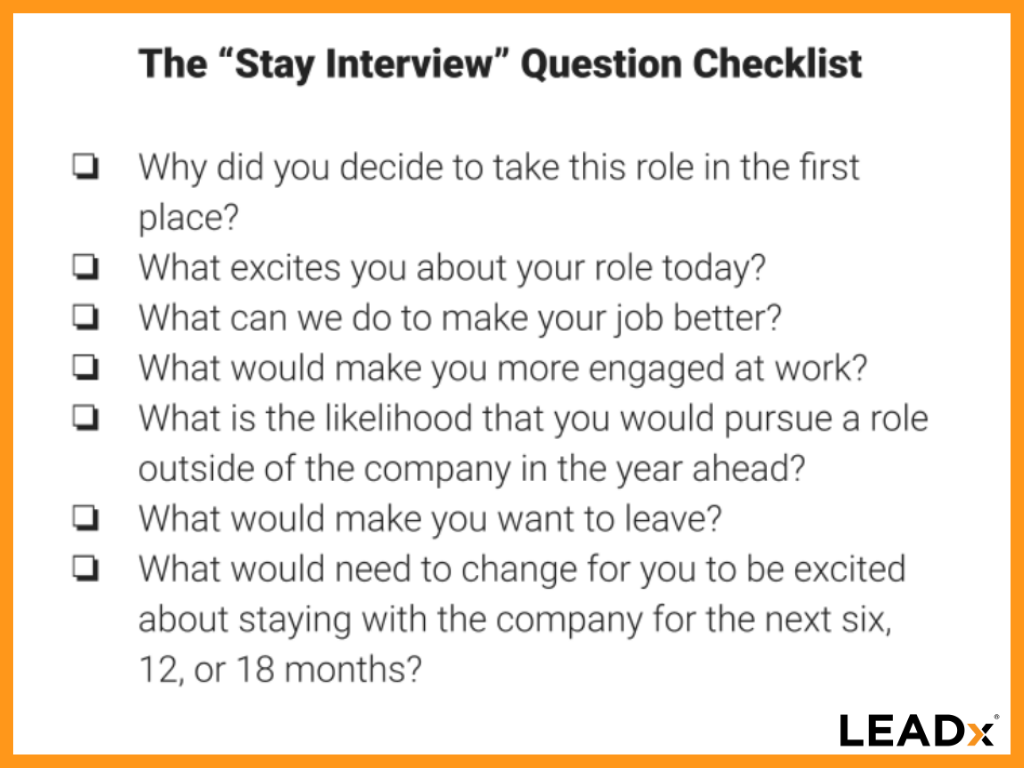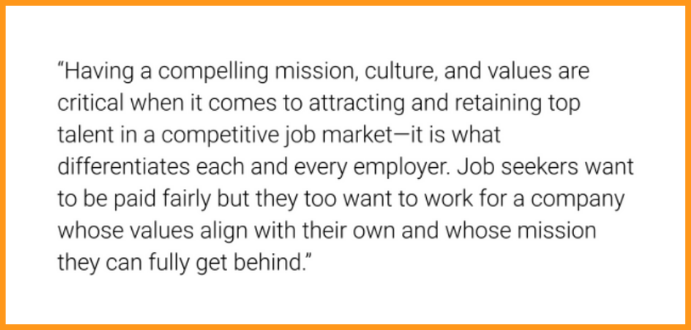
Getting recruited feels great because recruiters do everything in their power to win you over. They take the time to learn about your dreams, ambitions and passions. Then, they draw out all the ways your new role will fulfill those desires.
The thing is, the impactful moments that come with being recruited tend to be just that: moments. As time passes, people’s desires change, and so do their jobs. If their organization doesn’t keep up with their changing desires, they may begin to look elsewhere for a job that will.
 One way to tackle this problem and consistently and deeply engage your employees is to re-recruit.
One way to tackle this problem and consistently and deeply engage your employees is to re-recruit.
Re-Recruiting
Recruiting is expensive both in money and time. Gallup estimates replacing a single employee can cost up to two times the employee’s annual salary (ouch). The Society for Human Resource Management’s benchmark for filling open positions was 36 days in 2017, and in light of the Great Resignation, the current number is likely much higher.
Knowing that it's more expensive and time-consuming to hire than to retain, some companies are reallocating recruiting efforts toward wooing existing employees. It’s called “re-recruiting.” When done right, it can be enough to reignite employees’ fire for their role and the organization, and ultimately convince them to stay.
Here’s how to re-recruit:
Conduct More “Stay” Interviews (And Have Less Exit Interviews as a Result)
Rather than asking employees why they decided to leave, the goal of the stay interview is to understand what it would take to keep existing talent longer. Stay interviews seek to uncover what motivates employees and gather hard data on how they feel about their compensation, benefits, and professional development opportunities.
To start, try conducting stay interviews every six months. Ask questions like those in the checklist below:

As with any conversation where an employee is expected to share their thoughts, feelings, and opinions, be sure to establish trust and psychological safety. Communicate up front that their responses won’t be held against them and will either be kept confidential or shared anonymously with identifying personal details scrubbed.
Personalize Professional Development
Nobody wants to give their time, talents and effort to a company only to arrive at a dead-end—especially high performers. Growth-minded individuals will sooner jump ship than run out of growth opportunities.
You want your employees to be able to visualize their future and feel empowered by opportunity. Re-recruiting employees requires ongoing meaningful conversations about where they see themselves one, two or five years down the road. Organizations that excel at developing people help them chart their own course and provide resources along the way. They DON’T prescribe a single path. That’s because they understand that no two employees have the same combination of strengths, weaknesses and career aspirations.
This is where individualized development plans (IDPs) can make a big difference. IDPs are personalized action plans designed to help an employee reach their unique short- and long-term career goals. For example, if an employee is after a manager promotion, their IDP may focus on developing specific leadership skills. Or, if a sales representative’s goal is to earn enough commission to take her family on a vacation, you might pair her with an experienced sales mentor to help her learn to close larger deals.
Take the Time to Bake Mission, Vision, and Impact into Employees’ Work
Today’s employees care a lot about working for companies that are making a positive difference in the world. In fact, research shows it’s one of the main reasons employees join organizations.
The CEO of Glassdoor, Christian Sutherland-Wong writes about Glassdoor’s research on this topic:

Conversations about mission, vision, and values happen often throughout hiring and onboarding, only to drop off as new employees settle into their roles. An offhand mention of the mission in a quarterly staff meeting is not nearly enough to help employees make the emotional connection needed to keep them fired up about their job. Neither is a poster on a wall.
To re-recruit, employees need to be “sold” again and again on what the company is trying to accomplish in the world. This means conversations about mission, vision and values need to be happening frequently and at every level. Managers should draw a clear line connecting employees’ day-to-day work to the organization’s mission.
It’s one thing to tell employees how they’re making an impact and catalyzing positive change. It’s another thing to show them. One of the best ways to show employees the difference they make is to take the time to engage with happy customers and clients and have them share their stories and positive experiences.
Back to the Basics: Offer Competitive Compensation
It’s worth stating that compensation and benefits packages that were considered competitive pre-pandemic aren’t anymore. There’s inflation to account for, and it’s been proven that employees can achieve more gains by moving to a different company than staying with their current one. If companies want to retain high-performers for the long haul, this dynamic must be flipped. Raises—generous ones—are probably in order for star employees. After all, you’ll be paying significantly more to replace them if they leave.
Notice and Record the Moments When You Fell Short Along the Way
Recruiters don’t succeed every time. Often, they fail to woo high performers over from their jobs, or a competing offer is more appealing to the recruitee. Similarly, you can do everything right in an effort to re-recruit a high performer, and still lose them.
Here’s where re-recruiting comes in especially handy: You will likely be able to see exactly where you fell short. You can review your notes from your stay interview, compare their professional development plan to their new opportunity, and compare compensation. Between your notes and your exit interview, a clear picture should emerge.
Track these moments and be wary of any patterns. Are the majority of your high performers leaving for better pay? For larger leaps in growth opportunity? Instead of desperately seeking to understand in one exit interview, you can return to your longer-term record of re-recruition.
The Bottom Line
Throwing copious amounts of company resources at recruiting new employees is normalized. Doing the same to get current employees to stay is not. In this post-Great Resignation environment, that needs to change. To retain current employees, adopt a mindset of re-recruition. Show employees that their wants, needs, and desires matter, and that your organization will help cultivate them.






